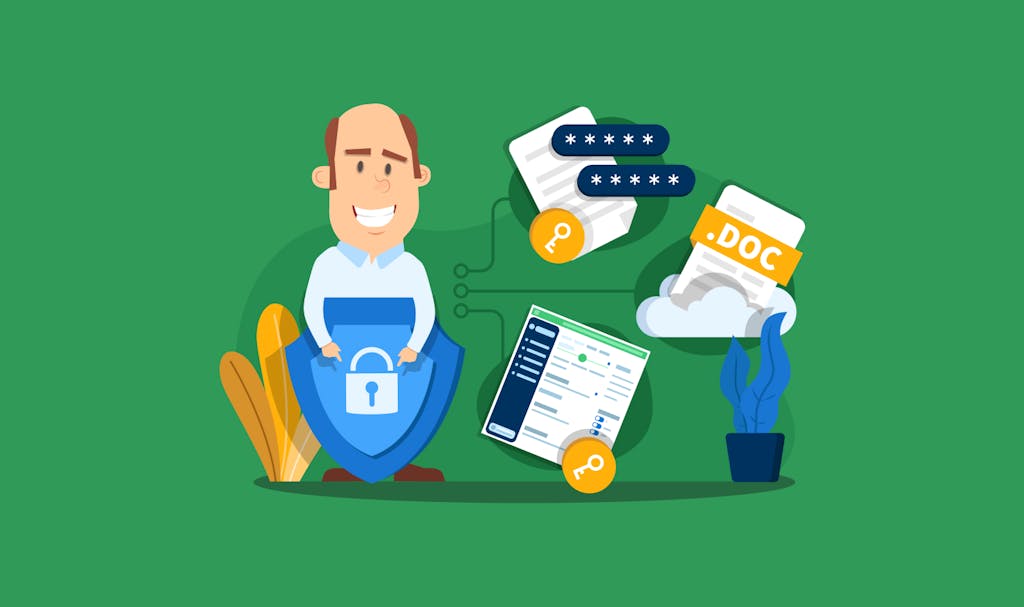
Due to the sensitive nature of the information contained in tax documents, it is critical to find a way to protect them. Without proper safeguards in place, the consequences of compromised records can be severe.
In this article, we delve into the risks of insecure document transfer and provide you with techniques and best practices to keep tax files safe.
Why securely sending tax documents matters
Tax documents contain highly sensitive personal and financial information that needs to be protected.
According to the Identity Theft Resource Center, there were 1,321 reported data compromises in 2023 alone due to security breaches and exposures at third- party organizations. The financial services industry experienced the most data breaches, with phishing being the most commonly cited attack.
If tax records fall into the wrong hands, the consequences can be severe. Hackers and scammers can use sensitive data, such as social security numbers, bank account details, income figures and more, for criminal activity. The major risks are:
- Identity theft: criminals can steal a person’s identity and impersonate them to commit fraud
- Tax fraud: criminals can file fake tax returns and steal refunds using stolen SSNs
- Financial loss: hackers can access bank accounts and steal money using account numbers and financial information
- Unauthorized accounts: scammers apply for payday loans and open accounts for utilities, cell phones and more in the victim’s name
- Medical identity theft: thieves obtain medical services using stolen personal and health insurance information
- Criminal impersonation: identity thieves may impersonate someone else if arrested, resulting in a criminal record in their name
How to send tax documents securely
1. Encrypted email
The first approach to encrypting messages and attachments while in transit is to use an email provider with built-in encryption, such as Outlook or Gmail.
In Outlook, for example, enabling encryption converts the readable plain text of a message into indecipherable cipher text. Only a recipient with the matching private key can decipher and read the encrypted content. Such services often allow users to encrypt both individual messages and all outgoing mail.
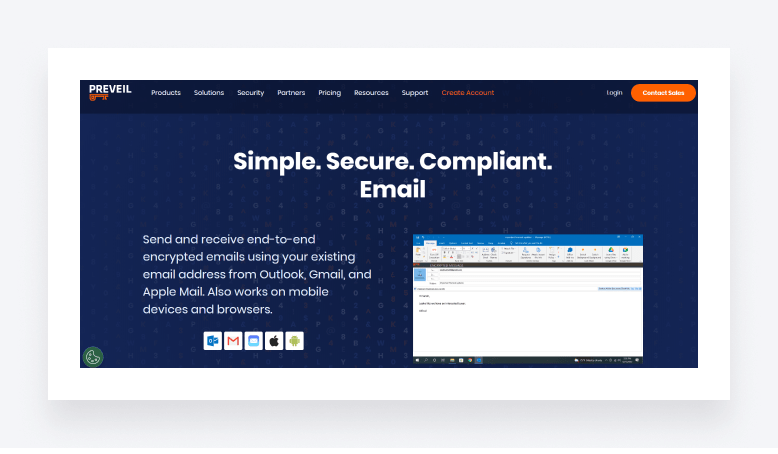
Another option is to install encryption plug-ins such as Preveil. It lets users keep their existing email addresses while integrating encryption capabilities into Gmail, Outlook and default mail apps on mobile. With plug-ins, the information is encrypted and decrypted only on the user’s device, never on the server, protecting messages from server hacks.
2. Secure file-sharing services
Secure file-sharing services allow users to safely exchange documents and media by restricting access with passwords or permissions. Many also provide end-to-end encryption for enhanced security.
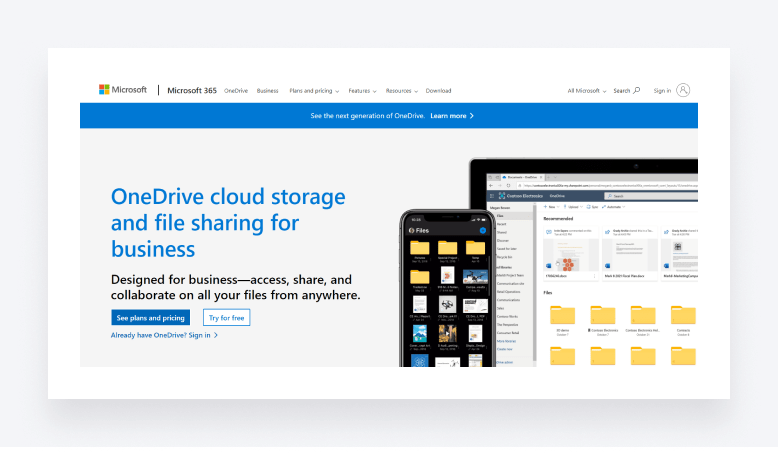
One option is Microsoft OneDrive, a cloud-based file-hosting platform that leverages SSL encryption to secure files during storage and transfer. Users can store files in OneDrive and access them from any device, with automatic syncing of changes across all linked devices.
Other secure file-sharing platforms, including Dropbox, ShareFile and FileCloud, provide similar functionality for syncing, accessing and sharing files from anywhere while keeping sensitive documents protected.
3. Secure online platforms
These solutions employ encryption and other security measures for individuals, businesses and tax professionals to safeguard tax data in transit and storage. There are a few options:
- Government portals
For instance, the IRS Document Upload tool allows taxpayers and tax professionals to submit documents securely online through IRS.gov rather than mailing them physically. However, it is limited to document uploads and does not secure other interactions.
- Financial assistants
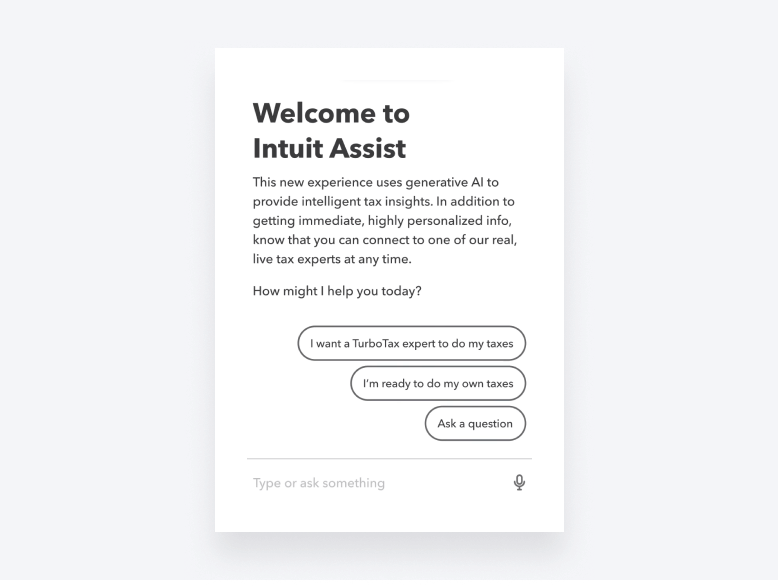
One tool in this category is Intuit Assist, an AI financial assistant in TurboTax that provides encrypted security while giving personalized recommendations, preparing taxes and enabling communication with their experts. Financial assistants offer a convenient solution for individual taxpayers and small businesses.
- Tax professional software
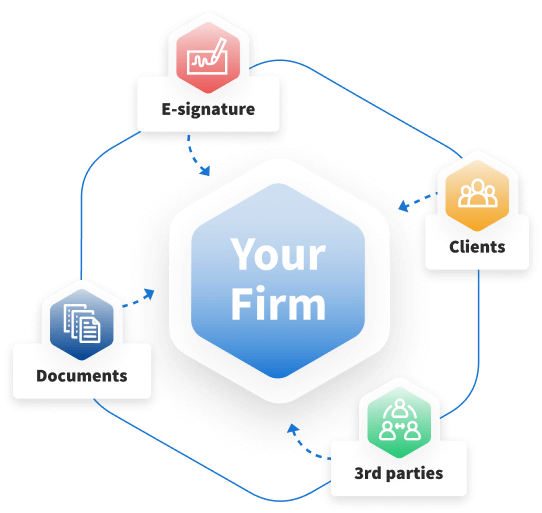
For tax professionals and taxpayers who use trusted specialists, there are solutions such as TaxDome. It allows users to scan, upload, approve and e-sign tax documents using a single password for access.
TaxDome encrypts data and backs it up automatically, storing information to meet legal, financial and data protection standards. Tax specialists can even share links with unauthorized clients to upload documents.
Beyond document sending, practice management software secures the entire tax preparation process, including file management and client communications, providing end-to-end security.
Best practices for sending tax documents securely
Following these essential security protocols when transmitting tax documents can further reduce risks and help protect sensitive personal and financial information:
1. Prepare documents before sending to facilitate secure delivery
- Give files clear descriptive names with details such as the tax year and form name to help the recipient identify contents
- Sort documents into logical folders by tax year, client, form type or other criteria to stay organized
- Digitize physical documents through high-quality scanning for simpler online sending
- Remove any old drafts or duplicate copies to reduce confusion or errors
2. Verify recipient contact information to avoid misdirecting sensitive tax files
- Double-check email addresses or portal usernames to ensure accuracy
- Confirm you have the most up-to-date contact info for the intended recipient
- For physical mail, verify the complete mailing address, including the recipient’s name
- For online transfers, check that the recipient’s account is fully set up and ready to accept documents
3. Use strong passwords to prevent unauthorized access to tax data
- Create a complex and unpredictable password that is difficult for hackers to guess
- Opt for a password that’s at least 12-14 characters long
- Include a mix of uppercase and lowercase letters, numbers and symbols
- Avoid using personal information such as names, birthdays, etc.
- Use a password manager to generate and store passwords securely
- Never reuse passwords across accounts or share passwords with others
4. Enable multi-factor authentication (MFA) to block hackers even if they steal a password
The options include SMS codes, authenticator apps, biometrics, security keys and more. Turn on MFA for email, document portals, cloud storage services, wi-fi networks and anywhere else tax data is stored or transmitted.
5. Learn to recognize phishing scams to avoid disclosing confidential tax information
Phishing involves emails, calls or messages posing as legitimate organizations to trick users into revealing sensitive data. Signs of phishing include:
- Suspicious sender addresses
- Odd URLs
- Incorrect logos/branding
- Typos
- Requests for sensitive data like passwords or SSNs
- Threatening language
- Demands for immediate action
Verify a suspicious contact by calling the organization directly using an official number from their website or documentation. Do not use contact information from the questionable message.
The safest way to send tax documents
When it comes to sending highly confidential tax information, the following methods balance security and peace of mind.
1. Working with tax professionals
Enlisting the help of tax experts, including CPAs, accountants or enrolled agents, can be the safest option for handling tax documents.
These professionals are trained on security protocols for managing sensitive client data electronically and physically. Tax pros adhere to regulations and use secure online portals, encryption and other best practices to protect documents.
2. In-person delivery (when required)
For certain documents, hand delivery directly to the recipient or tax agency office is the most secure choice. Though less convenient, it adds an extra level of safety when delivering irreplaceable hard-copy tax documents. When hand-delivering:
- Use tamper-proof envelopes and qualified seals to prevent unauthorized opening
- Obtain delivery confirmation receipts and maintain copies or scanned originals for your records
- Keep documents concealed until they can be delivered directly to the intended recipient
- Follow up to ensure timely delivery and resolution of any issues
Wrapping up
Protecting confidential tax information is vital, given the risks of identity theft and fraud. There are several strategies tax filers can implement to protect it when sending documents:
- Encrypting emails
- Using secure file sharing services
- Leveraging secure online platforms
It is also advisable to take additional precautions beyond these technical measures, such as keeping files organized, double-checking recipient information, using strong passwords and multi-factor authentication and monitoring for phishing attempts. For extremely sensitive materials, working directly with tax professionals or hand delivering documents is safest.
By comparing the transmission methods outlined in the article and choosing the most suitable, tax filers can mitigate risks and prevent data breaches. When it comes to protecting tax data, there is no place for compromising on security measures.

Thank you! The eBook has been sent to your email. Enjoy your copy.
There was an error processing your request. Please try again later.
Looking to boost your firm's profitability and efficiency?
Download our eBook to get the answers


